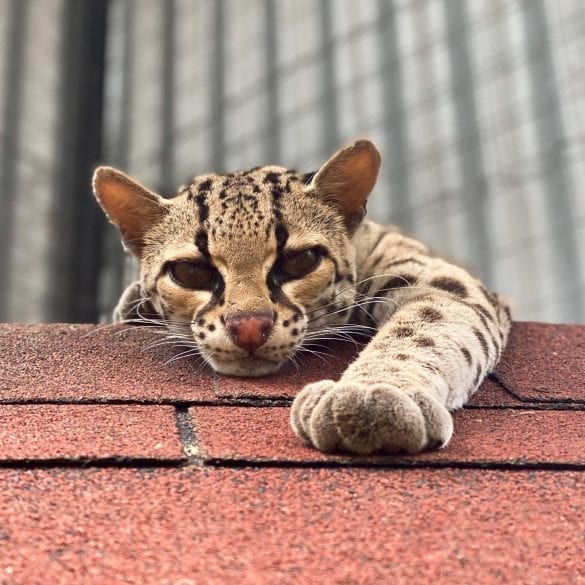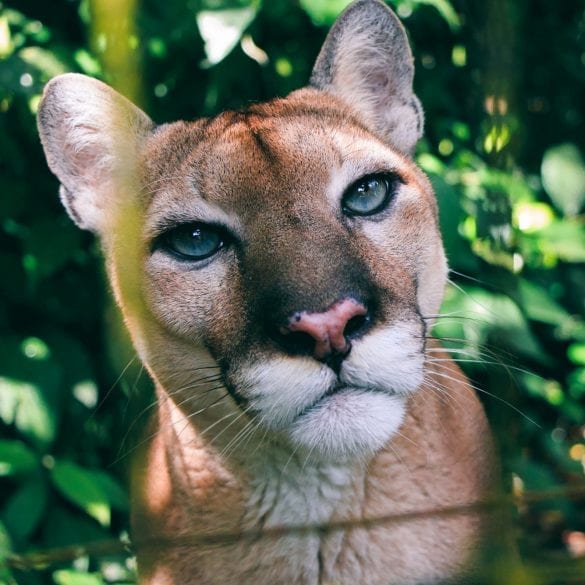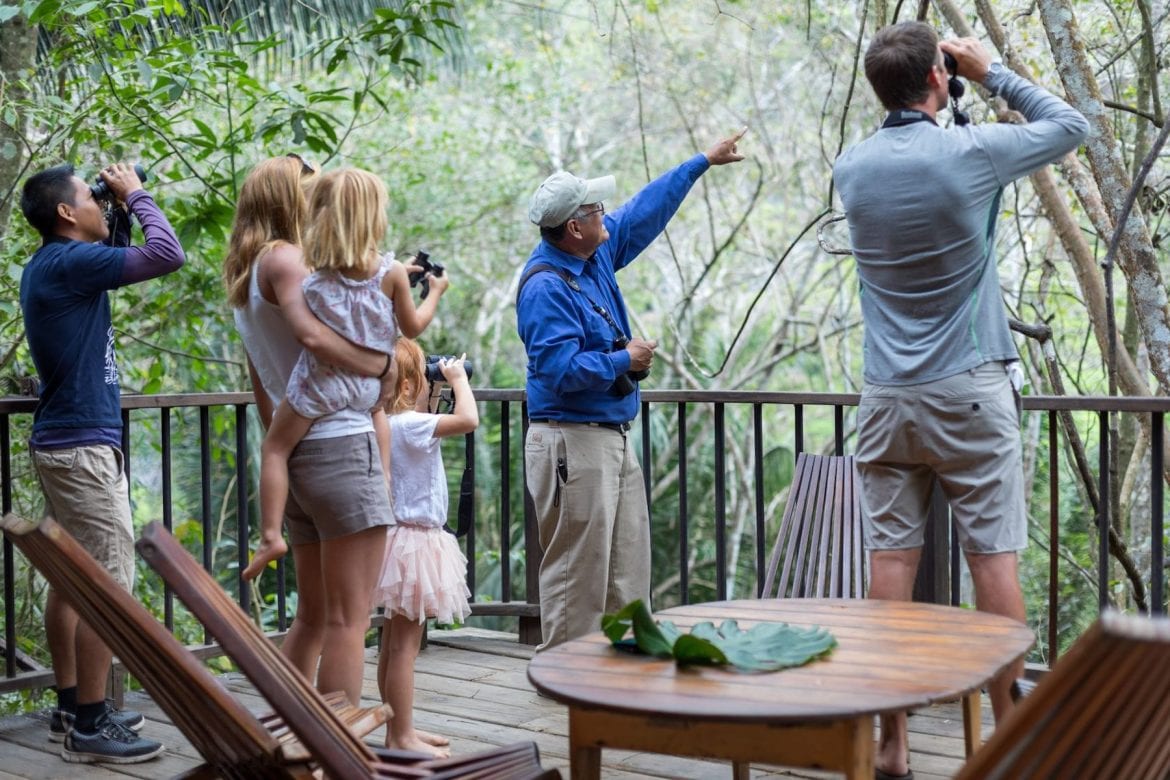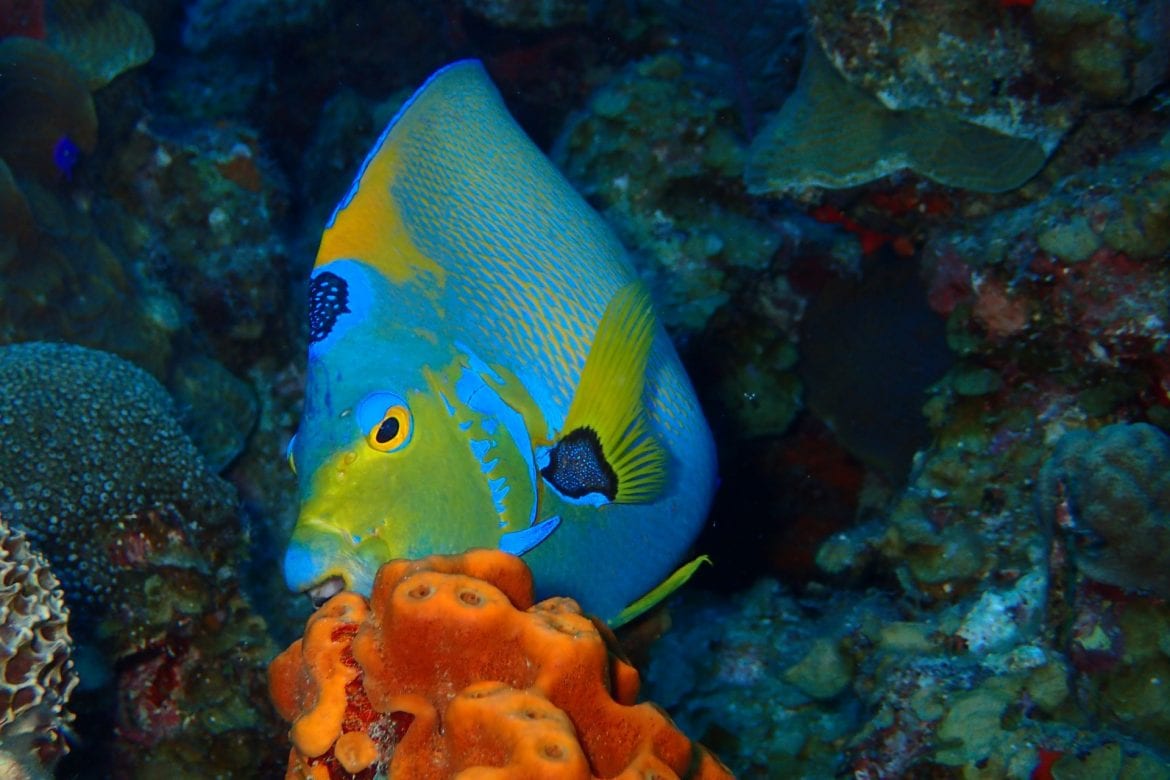Belize is one of the best places in the world to see amazing wildlife. Although it’s a small country, Belize has varied ecosystems, including coastlines, island atolls, tropical jungles, and even mountain pine forests. Here’s what you need to know about Belize’s incredible fauna.
Rare, Unique Animals

Valentina the Tapir is the most recent rescue at the Belize Zoo
Belize has some unusual native animals. The Baird’s tapir, also known as the mountain cow, is a herbivore that stands about three feet tall and can weigh more than 500 pounds. Belize’s national animal, the tapir was once hunted to near extinction, but conservation efforts have made great strides in preserving them.

Photo by San Ignacio Resort Hotel
The kinkajou is a nocturnal animal related to raccoons and coatis. It has a long tail, huge eyes, and a sweet expression. Sometimes known as “honey bears,” these adorable animals live in the trees of Belize’s jungles. Kinkajous are not endangered, but they have been victims of the illegal pet trade.
You can see kinkajous and mountain tapirs at The Belize Zoo or at one of Belize’s many wildlife sanctuaries.
Belize’s Big Cats






Belize has five native species of wild cats. They are jaguars, ocelots, jaguarundi, pumas, and margay. The ancient Maya revered the jaguar, and this large, spotted cat is still culturally important to Belizeans. The world’s first jaguar sanctuary was established in Belize at Cockscomb Basin Wildlife Sanctuary. Although sightings of this shy, nocturnal animal are rare, you can sometimes spot their tracks in the sanctuary trails.
The ocelot is a small, spotted big cat known for its gorgeous fur and adorable face. Of all the big cats, you are most likely to spot ocelots because they’re active in the daytime. Ocelots were hunted for their fur, but they are now a protected species. The margay is the smallest of Belize’s big cats. Also known as the tree ocelot, the margay is the best climber among the five. It lives primarily in the forest treetops and hunts small mammals.
- Princess the Puma. Photo Credit: The Belize Zoo
The puma is also known as the mountain lion, or cougar. These sleek brown cats are excellent hunters. Pumas can weigh up to 200 pounds. Meanwhile, jaguarundis are small wild cats. They have dark brown or reddish-brown fur, short legs, and long, slender bodies. Jaguarundis live in rainforests and pine forests. They prefer to hunt on the ground.
Birding in Belize
Besides Belize being a premier destination for wildlife, it’s also a great place for birders. With more than 300 native species of birds, the country serves as a part of many birds’ migratory patterns. Experienced and novice birdwatchers have recorded hundreds of species in a single trip.

An Aplomado Falcon in molt. © Francis Canto Jr.
Belize has more than 20 hummingbird species, and it’s common to see these fascinating birds in the sanctuaries and preserves. You also can spot kingfishers, motmots, toucans, mangrove swallows, Amazon kingfishers, squirrel cuckoos, scarlet macaws, Yucatan vireos, crossbills, pine siskins, stygian owls, and orange-breasted falcons.
Conservation Matters

Turneffe Reef Atoll. Photo courtesy Duarte Dellarole.
Belize has taken major steps to conserve its ecology and promote sustainable tourism. Almost 40% of the country is protected by a nature reserve, marine reserve, or national park. The government has instituted laws to regulate fishing and other industries that depend on the health of the Belize Barrier Reef.

A raw cacao pod in Southern Belize.
This has made Belize an ideal destination for eco-tourists and people who want to be close to nature. Here, you can enjoy agricultural tours that give a firsthand look at sustainable banana farming or cacao farming. Birding expeditions and wildlife viewing trips are available to anyone who wants to see Belize’s amazing flora and fauna.

White-lipped Peccaries (Tayassu pecari) walking through a cacao farm in the Maya Golden Landscape. | Photo: Ya’axché
Belizeans are proud of their beautiful country and proud to show it to visitors. They ask that you offer the same respect for nature by observing wildlife at a distance, wearing reef-safe sunscreen, and using eco-friendly bug spray.
Aquatic Animals

Mangroves provide many services, including nursery and feeding grounds for a variety of species, such as this school of snappers sheltering in Tunicate Cove, Belize.
Photo by Tim Laman
Belize’s coastline is rich in mangrove flats and seagrass plains, which makes it ideal for marine animals like manatees. The barrier reef and surrounding atolls are ideal places to see sea turtles, barracuda, tropical fish, reef fish, dolphins, and whale sharks.
Snorkeling and scuba diving are the best ways to experience Belize’s marine life. Chartered boats can take you out into the Caribbean Sea to see these beautiful aquatic creatures.
Where to See Wildlife
Sunrise on Baldy Beacon in the Cayo District. Image courtesy Roni Martinez
You can see Belize’s wonderful wildlife at one of the many sanctuaries and preserves, including:
- Cockscomb Basin Wildlife Sanctuary
- Rio Bravo Conservation Area
- Mountain Pine Ridge Forest Preserve
- Bacalar Chico National Park and Marine Reserve
- Chiquibil Forest Reserve
- The Community Baboon Sancturay
- The Belize Zoo and Tropical Education Center
Featured Photo by Leonardo Melendez. This article was published in June 2021.































